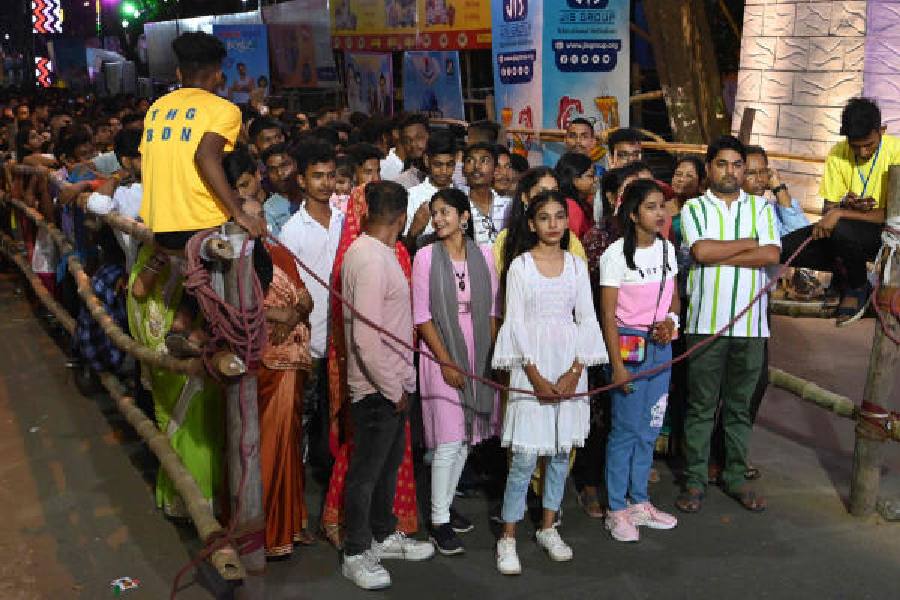The first casualty of the festival season has been Kolkata’s air.
Several parts of the city reported a downslide in air quality, according to figures from the seven automatic air quality monitoring stations across Kolkata.
Three out of the seven monitoring stations reported “moderate” air quality on Thursday. The rest recorded “good” or “satisfactory” air. The day before, five stations reported “moderate” air quality and the rest “good” or “satisfactory”.
During the monsoon and summer, the stations consistently recorded “good” or “satisfactory” air.
Air of moderate quality can cause “breathing discomfort to the people with lungs, asthma and heart diseases”, the Central Pollution Control Board has said.
A combination of factors is at play.
Scientists said a drop in temperature and wind speed traps pollutants — released by vehicles and other anthropogenic activities — closer to the ground. A large number of vehicles plying till late at night during the Puja adds pollutants to the air.
Stronger winds during the summer months blow away the pollutants. Higher temperatures also helps the process. As the air warms up, it rises up and takes away the pollutants. This dispersal slows down with a drop in temperature as winter approaches.
“This is the time when a build-up of pollutants closer to the ground starts and it worsens as winter approaches. This will become far worse in December and January,” said Anumita Roy Chowdhury, an air quality management specialist.
“The drop in temperature and the slowing down of the wind speed traps pollutants closer to the ground. This increases the exposure level of people to poor air,” said Roy Chowdhury, executive director of the Centre for Science and Environment (CSE), a research and advocacy organisation.
A police officer who was managing the Puja crowd said he could feel a chill in the late evening air. “I started wearing full-sleeve shirts from Friday because it feels a little uncomfortable as the night progresses. There is also a haze,” he said.
The air quality report for Thursday, available on the website of the West Bengal Pollution Control Board (WBPCB), showed that the concentration of PM2.5 in Kolkata’s air was 83.09 microgram per cubic metre. The concentration of PM10 was 153.42 microgram per cubic metre.
Roy Chowdhury said the concentration of both these pollutants was more than
the national standards. According to the National Ambient Air Quality Standards, the 24-hour average limit for PM2.5 and PM10 are 60 and 100 microgram per cubic metre.
PM2.5 — particulates that are 2.5 micron or less in size — can enter the deepest crevices of the lungs and trigger a host of critical ailments, such as lung cancer and chronic obstructive pulmonary disorder.
The gradual dip in air quality needs a host of measures to be implemented. Every year the civic authorities issue a host of guidelines for under-construction buildings to prevent dispersion of dust from their sites.
A study published in 2019 showed that the transport sector contributed more than 20 per cent of PM2.5 present in Kolkata’s air. More than half of that was emitted by goods vehicles.
The National Environmental Engineering Research Institute (NEERI) had done the study for the state pollution control board.
